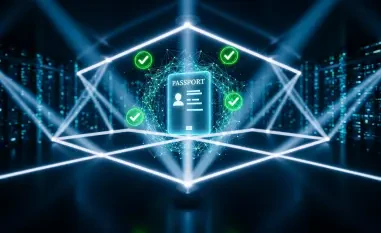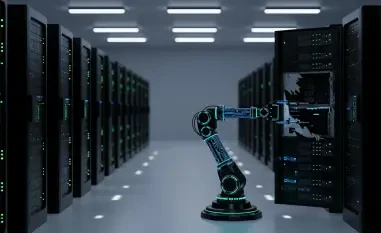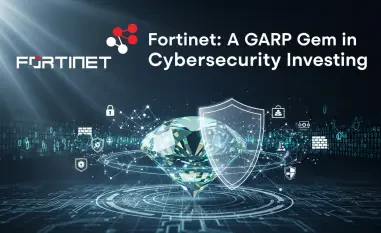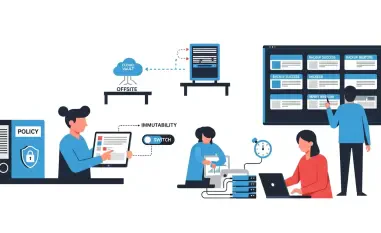In an era where digital connectivity underpins nearly every facet of industrial operations across the European Union, a staggering statistic emerges: nearly one-fifth of cyber threats now target operational technology (OT) systems, critical for managing industrial control systems and infrastructure. This alarming trend, highlighted by recent comprehensive cybersecurity analyses, underscores a pressing challenge for EU nations as they grapple with protecting vital sectors from sophisticated attacks. The purpose of this roundup is to gather diverse insights, opinions, and strategies from various cybersecurity sources and industry perspectives to explore whether OT systems have indeed become the new frontier for cyberattacks in the region. By synthesizing these viewpoints, this discussion aims to illuminate the evolving threat landscape and offer actionable guidance for stakeholders.
Exploring the Rising Threat to Operational Technology in Europe
Insights into the Growing Focus on OT Systems
Recent cybersecurity reports from leading EU agencies reveal a sharp uptick in attacks targeting OT environments, which are integral to sectors like energy, transportation, and manufacturing. Many industry observers note that the convergence of digital networks with industrial systems has created unprecedented vulnerabilities, making these systems attractive to malicious actors. This perspective emphasizes the urgency of addressing OT security as a priority, given the potential for widespread disruption to essential services.
Diverse Opinions on the Severity of the Threat
While some cybersecurity analysts argue that the focus on OT systems reflects a natural evolution of cyber threats as connectivity increases, others caution that the implications are far graver than anticipated. A segment of experts points out that unlike traditional IT breaches, OT attacks can directly impact physical infrastructure, leading to real-world consequences like power outages or transportation failures. This divergence in views highlights a critical need for tailored defenses that go beyond conventional cybersecurity approaches.
Why OT Security Demands Immediate Attention
Across various industry forums, there is a consensus that the growing reliance on interconnected systems amplifies the risk of cascading failures if OT vulnerabilities are exploited. Commentators from the industrial sector stress that the economic and safety ramifications of such disruptions could be catastrophic for EU member states. This shared concern serves as a rallying point for deeper collaboration between public and private entities to fortify these critical systems against emerging threats.
Analyzing the Cyber Onslaught on OT Infrastructure
State-Sponsored Hacktivism: A Major Concern for EU Systems
A recurring theme among cybersecurity specialists is the significant role of state-backed hacktivist groups in targeting OT infrastructure, particularly those with alleged ties to foreign geopolitical agendas. Reports frequently cite campaigns involving distributed denial-of-service (DDoS) attacks and exploits of industrial control system (ICS) weaknesses, often attributed to groups with sophisticated backing. This viewpoint paints a troubling picture of politically motivated disruptions aimed at destabilizing key sectors.
Challenges in Attribution and Intent
Differing analyses emerge regarding the attribution of these attacks, with some sources suggesting that these groups may operate as proxies for state interests, while others believe they act with a degree of independence. The lack of clear consensus on their motivations complicates the development of effective countermeasures. Many in the field agree, however, that regardless of origin, the impact on OT environments remains a pressing issue requiring international cooperation.
Broader Implications for Regional Stability
Industry watchers also highlight that the strategic targeting of OT systems by such actors could have ripple effects beyond immediate operational damage, potentially undermining public trust in critical infrastructure. Discussions in cybersecurity circles often focus on the need for robust intelligence-sharing mechanisms to better anticipate and respond to these threats. This perspective underscores the intersection of technology and geopolitics as a defining challenge for EU security.
Emerging Threat Actors and Their Advanced Tactics
Attention is increasingly turning to newer threat actors who deploy highly specialized tools to strike at OT systems in sectors like public administration and transportation. Various sources report on incidents involving custom malware designed to infiltrate industrial environments, causing significant operational setbacks. These accounts reveal a worrying trend of innovation among attackers, pushing the boundaries of traditional defense mechanisms.
Real-World Impacts and Case Studies
Specific cases, such as malware attacks on smart building automation firms, are frequently cited in industry analyses as evidence of the tangible harm inflicted by these emerging groups. Cybersecurity professionals note that the availability of such malicious tools on underground markets further exacerbates the risk, enabling less-skilled actors to launch devastating attacks. This observation calls for proactive measures to disrupt these illicit networks.
Adapting to Rapidly Evolving Threats
A point of agreement among many experts is the difficulty of staying ahead of adversaries who continuously refine their methods. Some advocate for advanced threat intelligence platforms to track and predict attack patterns, while others emphasize the importance of public-private partnerships to pool resources. These varied strategies reflect a shared recognition of the dynamic nature of the threat landscape facing OT systems.
Connectivity as a Double-Edged Sword for Industrial Systems
The interconnectedness of OT with broader digital networks is often described as both a boon for efficiency and a gateway for cyber risks. Many industry reports warn that this integration exposes critical systems to disruptions that were previously unimaginable in isolated setups. This dual nature of connectivity is a focal point for discussions on balancing innovation with security.
Regional Variations and Future Projections
Analysts also note distinct regional patterns, with certain EU countries experiencing a higher frequency of OT-focused incidents in recent months. Speculation abounds on which areas might be targeted next, with some sources pointing to nations with significant industrial bases as likely hotspots. These insights stress the importance of localized strategies to address specific vulnerabilities.
Rethinking Traditional Cybersecurity for OT Needs
A growing chorus of voices argues that standard IT security measures fall short when applied to OT environments, given their unique operational demands. Recommendations often include developing OT-specific frameworks that account for the physical consequences of breaches. This shift in thinking is seen as essential to safeguarding industrial systems against modern threats.
Geopolitical Undercurrents Fueling Cyber Aggression
Many cybersecurity assessments link the targeting of OT infrastructure to broader geopolitical tensions, suggesting that such attacks serve strategic objectives beyond mere disruption. Comparisons to past cyber campaigns reveal recurring patterns of state-aligned motives, as noted by various industry analyses. This connection highlights the complex interplay of politics and technology in shaping the threat environment.
Historical Context and Expert Perspectives
Drawing parallels with earlier cyber incidents, some sources argue that current attacks on OT systems reflect an escalation in both scale and intent. Differing views exist on whether these actions are purely opportunistic or part of a coordinated long-term strategy. Nonetheless, there is broad agreement that understanding these undercurrents is vital for crafting effective responses.
Anticipating Future Challenges
Looking ahead, several industry commentators predict that rising global tensions could further intensify the focus on OT as a battleground for cyber warfare. Suggestions for mitigating this risk include bolstering cross-border alliances and investing in resilience planning. These forward-looking ideas aim to prepare EU nations for an increasingly hostile digital landscape.
Key Takeaways and Protective Strategies for OT Security
Understanding the Scale of the Threat
Insights gathered from multiple cybersecurity channels confirm that OT systems now represent a significant portion of cyber threats in the EU, necessitating urgent action. The consensus among industry stakeholders is that nearly 20% of observed attacks target these critical environments, a figure that cannot be ignored. This stark reality drives home the need for immediate and comprehensive protective measures.
Actionable Steps for Stakeholders
Recommendations from various sources include adopting specialized cybersecurity frameworks designed specifically for OT contexts, rather than relying on generic IT solutions. Additionally, fostering collaboration across borders to share threat intelligence is frequently cited as a key strategy. These practical steps are seen as foundational to building stronger defenses against sophisticated attacks.
Building Resilience in Industrial Sectors
Further advice focuses on industry-specific tactics, such as conducting regular vulnerability assessments and developing tailored incident response plans for industrial systems. Many experts also stress the importance of training personnel to recognize and mitigate OT-specific risks. These measures collectively aim to enhance the resilience of critical infrastructure amid growing cyber hostility.
Safeguarding Europe’s Industrial Backbone
Reflecting on the discussions that unfolded, it became evident that OT systems have emerged as a prime target for cyberattacks across the EU, driven by both technological vulnerabilities and geopolitical motives. The roundup of insights from diverse cybersecurity sources painted a clear picture of the challenges faced, from state-sponsored hacktivism to the rise of innovative threat actors. Moving forward, stakeholders must prioritize the adoption of OT-specific security frameworks and invest in cross-border partnerships to share critical intelligence. Additionally, industries should consider integrating regular risk assessments and specialized training into their operational protocols to stay ahead of evolving threats. By taking these proactive steps, the EU can strengthen its industrial backbone and ensure the safety and stability of its critical infrastructure in an ever-shifting digital battlefield.













